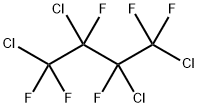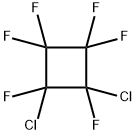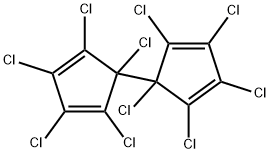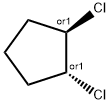1,2-DICHLOROBUTANE
- CAS NO.:616-21-7
- Empirical Formula: C4H8Cl2
- Molecular Weight: 127.01
- MDL number: MFCD00013676
- EINECS: 210-469-5
- SAFETY DATA SHEET (SDS)
- Update Date: 2025-05-09 13:07:58

What is 1,2-DICHLOROBUTANE?
The Uses of 1,2-DICHLOROBUTANE
1,2-Dichlorobutane was used to evaluate temperature-composition phase diagrams of binary mixtures composed of a haloalkane dissolved in either 1-ethyl-3-methylimidazolium ethylsulfate or 1-ethyl-3-methylimidazolium ethylsulfonate.
What are the applications of Application
1,2-Dichlorobutane is causes the alkylation of benzene using aluminum chloride or liquid hydrogen fluoride as catalyst
General Description
1,2-Dichlorobutane causes the alkylation of benzene using aluminium chloride or liquid hydrogen fluoride as catalyst.
Properties of 1,2-DICHLOROBUTANE
| Melting point: | -70.34°C (estimate) |
| Boiling point: | 125 °C (lit.) |
| Density | 1.112 g/mL at 25 °C (lit.) |
| vapor pressure | 28 mm Hg ( 32 °C) |
| refractive index | n |
| Flash point: | 80 °F |
| form | clear liquid |
| color | Colorless to Light yellow |
| explosive limit | 2.25-9.25%, 20°F |
| BRN | 1731376 |
| CAS DataBase Reference | 616-21-7(CAS DataBase Reference) |
| EPA Substance Registry System | 1,2-Dichlorobutane (616-21-7) |
Safety information for 1,2-DICHLOROBUTANE
| Signal word | Warning |
| Pictogram(s) |
 Flame Flammables GHS02  Exclamation Mark Irritant GHS07 |
| GHS Hazard Statements |
H226:Flammable liquids H315:Skin corrosion/irritation H319:Serious eye damage/eye irritation H335:Specific target organ toxicity, single exposure;Respiratory tract irritation |
| Precautionary Statement Codes |
P210:Keep away from heat/sparks/open flames/hot surfaces. — No smoking. P302+P352:IF ON SKIN: wash with plenty of soap and water. P305+P351+P338:IF IN EYES: Rinse cautiously with water for several minutes. Remove contact lenses, if present and easy to do. Continuerinsing. |
Computed Descriptors for 1,2-DICHLOROBUTANE
New Products
4,4-Difluoropiperidine hydrochloride tert-butyl 9-methoxy-3-azaspiro[5.5]undecane-3-carboxylate Indole Methyl Resin N-Isopropylurea N,N-Dicyclohexylcarbodiimide(DCC) MELDRUMS ACID 5-METHYLISOXAZOLE-4-CARBOXYLIC ACID Magnessium Bis glycinate Zinc ascorbate 1-bromo-2-butyne 2-acetamidophenol 9(10H)-anthracenone Erythrosin B, 4-Piperidinopiperidine 2-((4-morpholinophenylamino) (methylthio) methylene) malononitrile 2,4-dihydroxybenzaldehyde 3-(4-morpholinophenylamino)-5-amino-1H-pyrazole-4-carbonitrile Methyl 2-methylquinoline-6-carboxylate 2,6-dichloro-4-nitropyridine 4-Bromo-2-chlorobenzonitrile 2-(benzylamino)acetic acid hydrochloride 4-(tert-Butoxycarbonylamino)but- 2-ynoic acid 3,4-dihydro-2H-benzo[b][1,4]dioxepine 1-Phenyl-1-cycloprppanecarboxylicacidRelated products of tetrahydrofuran








You may like
-
 1,2-Dichlorobutane CAS 616-21-7View Details
1,2-Dichlorobutane CAS 616-21-7View Details
616-21-7 -
 1,2-Dichlorobutane CAS 616-21-7View Details
1,2-Dichlorobutane CAS 616-21-7View Details
616-21-7 -
 3-(4-amino-1-oxoisoindolin-2-yl)-1-methylpiperidine-2,6-dione 98%View Details
3-(4-amino-1-oxoisoindolin-2-yl)-1-methylpiperidine-2,6-dione 98%View Details -
 614-19-7 98%View Details
614-19-7 98%View Details
614-19-7 -
 20677-73-0 (2,2-diethoxyethyl)methylamine 98%View Details
20677-73-0 (2,2-diethoxyethyl)methylamine 98%View Details
20677-73-0 -
 3-(4-(hydroxyamino)-1-oxoisoindolin-2-yl)piperidine-2,6-dione 98%View Details
3-(4-(hydroxyamino)-1-oxoisoindolin-2-yl)piperidine-2,6-dione 98%View Details -
 57381-49-4 2-bromo-4-chlorobenzonitrile 98%View Details
57381-49-4 2-bromo-4-chlorobenzonitrile 98%View Details
57381-49-4 -
 4,6-dichloropyrimidine-5-carbaldehyde 98%View Details
4,6-dichloropyrimidine-5-carbaldehyde 98%View Details
5305-40-8
Statement: All products displayed on this website are only used for non medical purposes such as industrial applications or scientific research, and cannot be used for clinical diagnosis or treatment of humans or animals. They are not medicinal or edible.
